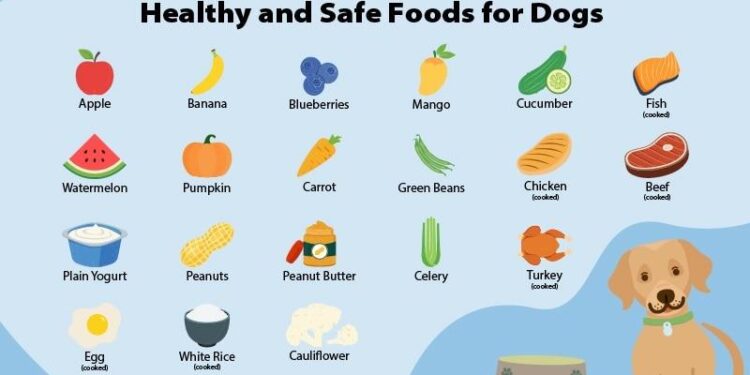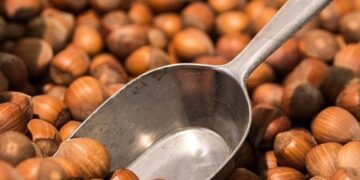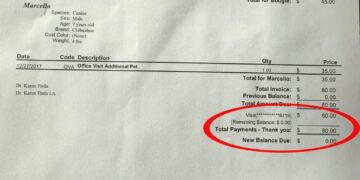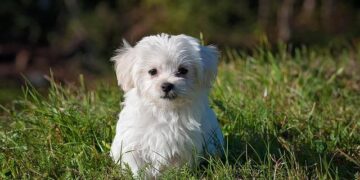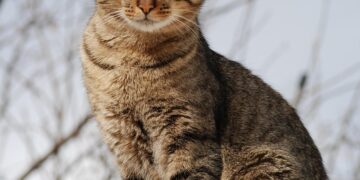Table of Contents
Introduction: The Sound on the Stairs I Learned to Dread
As a veterinary nutritionist, my professional life is dedicated to the elegant science of animal health.
But for years, my personal life was defined by a sound I grew to dread: a low, guttural hack echoing from the hallway, followed by the unmistakable squelch of a hairball hitting the carpet.
This was the daily reality with Leo, my magnificent, long-haired Maine Coon mix.
He was my joy, but his chronic hairballs were my constant, nagging failure.
I did everything by the book.
Leo was on a premium, veterinarian-recommended “hairball control” dry food.
I read the labels, I paid the premium price, and I trusted the science I thought I knew.
The bag promised a “natural fiber blend” to “gently move hair through the digestive tract”.1
Yet, the hairballs kept coming.
Sometimes they were small, tightly-wound tubes of fur; other times, they were alarming masses mixed with undigested food.
I was caught in a frustrating loop: clean the mess, worry about Leo, and scoop more of the “solution” into his bowl, hoping this time it would work.
Many cat owners share this experience, accepting the unpleasantness as a normal part of life with a feline companion, especially a long-haired one.3
But my training nagged at me.
The disconnect between the promised solution and my reality was too great.
I was following the standard advice to the letter, yet my cat wasn’t getting better.
In fact, he was slowly getting worse.
This frustrating journey forced me to question everything I thought I knew about hairballs, sending me deep into the clinical research and, ultimately, to a revelation that would change not only Leo’s life, but the way I approach feline nutrition entirely.
I learned that the very “solution” I was relying on was part of a fundamentally flawed approach to feline health, an approach that focuses on the symptom while ignoring the systemic cause.
The Great Fiber Myth: Why the “Solution” on the Bag Made Things Worse
The logic behind conventional hairball diets seems straightforward, almost intuitive.
Cats groom, they swallow hair, and sometimes that hair—composed of indigestible keratin—clumps together in the stomach instead of passing into the intestines.4
The industry’s answer to this mechanical problem is a mechanical solution: add a large amount of insoluble fiber to the food.
Ingredients like powdered cellulose (sometimes humorously referred to as “wood pulp”), miscanthus grass, or beet pulp act as a sort of internal broom, adding bulk to the stool to physically push or sweep the ingested hair through the gastrointestinal (GI) tract.5
It’s a simple, marketable story: a clogged pipe needs a good scrubbing.
For a while, I clung to this model.
I even switched Leo to a more expensive “prescription” version of the same high-fiber, dry food concept.
The result was not the relief I’d hoped for.
The hairballs persisted, and new, more subtle problems began to emerge.
His once-glossy coat became dull and flaky.
His litter box output became enormous, dry, and alarmingly fragrant.
He seemed perpetually hungry yet less energetic.
The turning point came on a Tuesday morning.
I found Leo huddled in a corner, lethargic.
He had been retching for hours, producing nothing but foamy bile.
A frantic trip to the emergency vet revealed he wasn’t blocked, thankfully, but his gut was inflamed and his motility was sluggish.
He was dehydrated.
The very food meant to solve his problem had, over time, contributed to a system-wide state of poor digestive health.
That was the moment I knew the “clogged pipe” model was dangerously wrong.
My deep dive into the veterinary literature confirmed my fears and illuminated why the high-fiber approach had failed Leo so spectacularly.
First, and most critically, the veterinary consensus is clear: frequent hairballs are not normal.
While an occasional hairball might be unremarkable, regular vomiting of hair (more than once or twice a month) is a clinical sign of an underlying problem.3
The issue isn’t just the presence of hair; it’s the failure of the GI tract to transport it effectively.
This is often due to two core issues: altered gastrointestinal motility (the rhythmic contractions that move food along) or chronic inflammation, such as Inflammatory Bowel Disease (IBD).8
By focusing only on the hair, we ignore the flashing red light on the dashboard indicating the engine itself is failing.
Second, the “fiber fix,” especially when delivered in a dry kibble format, can create a cascade of collateral damage:
- Nutrient Malabsorption: High levels of dietary fiber can interfere with the digestion and absorption of other vital nutrients, particularly protein and minerals.12 The fiber essentially rushes everything through the system too quickly for proper nutrient uptake. This can lead to a dull coat, poor skin health, and weight loss despite a good appetite—all symptoms I had seen in Leo.
- Digestive Upset: While fiber can help with constipation, too much of it can cause the opposite effect, or lead to bloating, excessive gas, and discomfort.12 It’s a crude tool that can easily upset the delicate balance of the feline gut.
- Dehydration and Strain: This is perhaps the most insidious problem. Cats are desert animals with a naturally low thirst drive, evolved to derive the majority of their hydration from their prey.9 Dry kibble, containing only about 10% moisture, forces them into a state of chronic, low-grade dehydration. Adding high levels of fiber to this already dry food makes the situation worse. Fiber requires a great deal of water to do its job of bulking up the stool; in a dehydrated cat, it can lead to harder, drier stools that are more difficult to pass, further straining the system.6
The conventional hairball food model doesn’t truly solve the core problem of poor GI health; for many cats, it merely swaps one set of symptoms for another.
An owner might see a reduction in hairballs but is now faced with a cat suffering from a dull coat, poor nutrient absorption, and voluminous stools, all while the underlying GI inflammation or poor motility goes unaddressed.
It is not a cure; it is a symptom swap, a dangerous sleight of hand that masks the root cause of the illness.
The Epiphany: Your Cat’s Gut Isn’t a Clogged Pipe—It’s a River
Standing in the vet clinic, looking at a miserable and dehydrated Leo, I had my epiphany.
It was a moment of profound clarity that fused my professional knowledge with my personal desperation.
I had been trying to fix a plumbing problem.
I had been viewing Leo’s gut as a simple, passive pipe that was clogged with hair, and my only tool was a bigger, rougher pipe cleaner in the form of more fiber.
But a cat’s digestive tract isn’t a pipe.
It’s a living, dynamic ecosystem.
The better analogy, the one that changed everything, is that of a river.
A healthy feline GI tract is like a powerful, flowing river.
It has:
- A strong, steady current (gastrointestinal motility) that keeps everything moving.
- A healthy riverbed (the gut lining and microbiome) that allows for the absorption of nutrients and supports the local ecosystem.
- Stable banks (the intestinal walls) fortified by the right kind of “vegetation” (strategic fiber).
- Clean headwaters (the cat’s body and environment) that don’t overwhelm the river with debris.
In a healthy river, debris—a fallen leaf, a stray twig, or in this case, ingested hair—is simply carried along by the current and exits the system without issue.
A hairball is not a clog that causes the system to fail.
A hairball is the result of a system that has already failed.
It’s debris that has become trapped in a stagnant, unhealthy river where the current has weakened, the ecosystem is out of balance, and the banks are unstable.
This reframing was revolutionary.
The goal was no longer to attack the hairball.
The goal was to restore the health and flow of the river itself.
This shifted the entire problem from one of “hairball control” to one of “GI health optimization.”
The Healthy Gut River Blueprint: A New Framework for Hairball Freedom
This new “Gut River” model provides a holistic blueprint for addressing hairballs at their source.
Instead of a single, blunt-force solution, it relies on four interconnected pillars that work together to create a resilient, healthy digestive system.
Pillar 1: The Current – Maximizing Moisture to Ensure Flow
The single most critical element of a healthy river is its current.
Without a strong, steady flow, water becomes stagnant, and debris accumulates.
In the feline gut, the current is motility, and it is overwhelmingly dependent on one key nutrient: water.
As mentioned, cats evolved as desert hunters, with a physiology designed to extract most of their water from their prey—mice, birds, and lizards, which are composed of about 70-75% water.9
Their thirst drive is correspondingly weak.
When we feed them a diet of dry kibble, which contains a mere 5-10% moisture, we place them in a perpetual state of mild dehydration.
This is a foundational stressor on their entire system, but it is particularly devastating to the digestive tract.
Dehydration slows down GI motility, turning the powerful river into a sluggish stream.15
The solution is simple and non-negotiable: transition your cat to a high-moisture diet.
This means feeding canned (wet) food, a fresh food diet, or a properly balanced raw diet.
These foods mimic the natural moisture content of a cat’s ancestral prey, providing the hydration necessary to maintain a strong digestive current that keeps ingested hair and food moving smoothly through the system.16
The difference is not trivial; it is the single most impactful change you can make for a cat suffering from hairballs.
| Food Type | Average Moisture Content (%) | Protein Source Quality (Typical) | Carbohydrate Load (Typical) | Impact on GI Motility |
| Dry Kibble | 5-10% | Variable; often includes plant proteins | High | Slows motility due to dehydration |
| Canned Wet Food | 75-80% | Good to Excellent; meat-focused | Low to Moderate | Promotes healthy motility with hydration |
| Fresh/Raw Food | 70-75% | Excellent; whole, unprocessed meat | Very Low | Optimizes motility and digestion |
This table starkly illustrates the hydration deficit inherent in dry food.
Making the switch to a moisture-rich diet is like restoring the flow of water to a dry riverbed—it is the essential first step to bringing the entire ecosystem back to life.
Pillar 2: The Riverbed – Fortifying the System with Species-Appropriate Nutrition
A river’s health is also determined by the health of its riverbed—the soil and rock that form its foundation and support its ecosystem.
In the gut, this is the intestinal lining, responsible for absorbing nutrients and maintaining a healthy microbiome.
To fortify this riverbed, we must provide high-quality, species-appropriate building materials.
Sub-Pillar 2A: Reducing Shedding with Healthy Fats (Omega-3s & -6s)
One of the most effective ways to manage hairballs is to reduce the amount of hair entering the river in the first place.
Excessive shedding is often a sign of suboptimal skin and coat health, which can be directly addressed through nutrition.
Essential fatty acids are key players here.
Omega-6 fatty acids, like linoleic acid, are vital for maintaining the structural integrity of the skin’s barrier.19
Omega-3 fatty acids, particularly EPA (eicosapentaenoic acid) and DHA (docosahexaenoic acid) found in cold-water fish oil, are powerful anti-inflammatory agents.20
They support skin health, improve coat luster, reduce dryness and flakiness, and ultimately help minimize shedding.21
A strong, healthy coat holds onto hair better, meaning less loose fur is swallowed during grooming.
While no single ideal ratio has been definitively established for cats, research suggests that an Omega-6 to Omega-3 (n-6:n-3) ratio below 10:1 can help reduce inflammatory responses in the skin and body.19
Most commercial foods are disproportionately high in Omega-6s, so supplementing with a quality fish oil is often necessary to achieve this healthier balance.
Sub-Pillar 2B: Preventing Clumps with a Natural Emulsifier (Egg Yolk Lecithin)
This is a more advanced, holistic strategy that addresses how hair clumps together.
Ingested hair doesn’t spontaneously form a sticky ball.
In a sluggish stomach, it gets mixed with fats and mucus, which act as a binder.11
Instead of trying to force this sticky mass out, we can prevent it from forming.
Egg yolks are a nutritional powerhouse for carnivores and contain a secret weapon: lecithin.
Lecithin is a phospholipid that functions as a natural fat emulsifier.
When present in the stomach, it breaks down the fats that are binding the hair together.
This process, called emulsification, prevents the hair from forming a cohesive, gooey clump, allowing individual strands to pass harmlessly through the GI tract with the rest of the digesta.11
Furthermore, egg yolks are a rich source of choline, a nutrient that supports the production of acetylcholine, which in turn enhances GI motility—strengthening the river’s current.11
Adding a cooked or raw egg yolk to your cat’s food a few times a week can be a powerful, species-appropriate strategy for hairball prevention.
Pillar 3: The Banks – The Strategic Use of “Vegetation” (Fiber)
On a river, vegetation along the banks can be beneficial.
It can help direct the flow, prevent erosion, and provide habitat.
But if the vegetation becomes overgrown and choked with the wrong species, it can slow the current and clog the waterway.
Fiber in a cat’s diet must be viewed with the same strategic nuance.
Fiber is not the enemy; over-reliance on high quantities of inappropriate fiber is the enemy.
It is a useful tool, but it should never be the foundation of the diet.
The key is to use the right kind of fiber in the right amount.
There are two main types of fiber, and they have very different jobs 12:
- Insoluble Fiber: This is the “broom” or “scrubber” found in most hairball kibbles. It does not dissolve in water and primarily adds bulk to the stool, which can help stimulate the intestines to move things along. Sources include cellulose and miscanthus grass. It is most useful for certain types of constipation.
- Soluble Fiber: This type of fiber does dissolve in water, forming a gel-like substance. This gel can help soothe the gut lining, absorb excess water to firm up loose stools, and, importantly, it acts as a prebiotic—food for the beneficial bacteria in the gut microbiome. Common sources include pumpkin, psyllium husk, and apple pomace.12
The “Gut River” approach abandons diets built around massive quantities of processed insoluble fiber.
Instead, it advocates for the strategic use of small amounts of natural, soluble fiber sources like pure canned pumpkin or psyllium husk powder as a supplement added to a high-moisture diet.
This provides the prebiotic and soothing benefits of soluble fiber to support the health of the river’s banks without the dehydrating and nutrient-depleting effects of a high-fiber kibble.12
A quarter-teaspoon of pumpkin mixed into wet food is often all that’s needed.
Pillar 4: The Headwaters – Reducing Inflow Through Proactive Care
Finally, even the healthiest river can be overwhelmed if the inflow of debris from its headwaters is too great.
This pillar focuses on simple, proactive measures to reduce the amount of hair your cat ingests.
- Grooming: This is the first and most effective line of defense. Every hair you remove with a brush is a hair that won’t end up in your cat’s stomach. Regular brushing, especially for long-haired cats, is essential.9
- Hydration Stations: In addition to feeding a high-moisture diet, encourage your cat to drink more water. Many cats are attracted to moving water, so a pet water fountain can be a great investment. Providing multiple water bowls made of different materials (ceramic, stainless steel) in various locations can also entice them to drink more often.9
- Stress and Boredom Management: Cats may over-groom as a self-soothing behavior when they are stressed, anxious, or bored.9 Ensuring your cat has an enriching environment with plenty of toys, climbing structures like cat trees, and dedicated playtime can reduce this behavior-driven hair ingestion.
The “Gut River” framework reveals a profound truth: hairball management is not an isolated task but a direct outcome of achieving total systemic wellness.
A high-moisture, species-appropriate diet doesn’t just “fix” hairballs; it simultaneously improves hydration, which supports urinary tract health; it enhances skin and coat condition through healthy fats; it promotes better nutrient absorption; and it nurtures a healthy gut microbiome, which is linked to immune function.
Addressing the hairball problem correctly triggers a positive cascade of health benefits across the entire body.
The hairball is simply the most obvious “check engine light” for a system that needs a comprehensive tune-up.
The Complete Hairball-Proof Action Plan: Brands, Supplements, and Routines
Translating this new framework into action is straightforward.
It involves choosing the right foods, incorporating key supplements, and establishing simple daily routines.
Part 1: Building the Foundation – Your Shopping List for High-Moisture, High-Protein Foods
Your primary goal is to find a food that is high in moisture and rich in animal-based protein.
When reading labels, look for:
- Moisture Content: Greater than 75%.
- First Ingredients: A named muscle meat or organ meat (e.g., chicken, turkey, salmon, beef liver) should be the first one or two ingredients.
- Low Carbohydrates: Avoid foods with large amounts of corn, wheat, soy, or even peas and potatoes high up on the ingredient list.
- No Unnecessary Fillers: Steer clear of artificial colors, flavors, and preservatives.
Curated Brand Examples:
These brands consistently produce foods that align with the “Gut River” principles.
This is not an exhaustive list, but a starting point to guide your search.
- Premium Tier:
- Orijen Wet Food: Known for its high percentage of whole-prey animal ingredients and nutrient-dense formulas.32
- Smalls Fresh Food: A subscription service offering human-grade, high-protein, high-moisture meals.33
- Tiki Cat: Offers a wide variety of shredded meat and fish formulas in broth with very low carbohydrates.32
- Mid-Tier / Widely Available:
- Weruva: Features shredded chicken and fish in gravy-like textures, excellent for hydration and picky eaters.32
- Open Farm Rustic Blends: Uses ethically sourced proteins and includes beneficial ingredients like pumpkin and coconut oil in a high-moisture format.32
- Budget-Friendly Options:
- Wellness Complete Health Pâté: A readily available brand that offers good quality animal protein and high moisture content at an accessible price point.32
- Fancy Feast Classic Pâté: While a budget brand, the classic pâté line is surprisingly low in carbohydrates and high in animal protein, making it a viable option for many owners.34
Part 2: Fortifying the System – Top-Tier Supplements
Supplements should be used to enhance an already excellent diet, not to compensate for a poor one.
- Omega-3 Supplements (for Pillar 2A):
- What to Look For: Choose a liquid fish oil or gel cap derived from small, wild-caught fish like sardines and anchovies, which are less likely to accumulate heavy metals. The product should be third-party tested for purity and freshness.
- Veterinarian-Recommended Brands:
- Welactin: A highly respected brand often recommended by veterinarians, available in liquid and softgel forms.20
- Nordic Naturals Omega-3 Cat: Specifically formulated for felines from sustainably sourced fish and well-regarded for its purity.36
- VetriScience Omega Healthy Skin: Provides a balanced blend of Omega 3, 6, and 9 fatty acids to support overall skin health.22
- Strategic Fiber Supplements (for Pillar 3):
- When to Use: Use sparingly to help with occasional constipation, firm up loose stools during a diet transition, or for cats with known anal gland issues.
- Recommended Products:
- Pure Canned Pumpkin: Look for 100% pure pumpkin with no added sugar or spices. Brands like Weruva Pumpkin Patch Up! or simply a can of organic pumpkin from the grocery store work perfectly.38
- Psyllium Husk Powder: A small pinch of pure psyllium husk powder (without added sweeteners) can be mixed into wet food. It is a component in many commercial supplements like Vet’s Best Hairball Control or can be purchased on its own.12
Part 3: The Daily Routine for a Healthy “River”
Integrate these pillars into a simple, sustainable routine.
- Daily:
- Feed measured meals of high-moisture food 2-3 times a day.
- Clean and refresh water in fountains and bowls.
- Add a dose of Omega-3 fish oil to one meal.
- Engage in at least 15 minutes of interactive play.
- Weekly:
- Conduct 2-3 grooming sessions (daily for long-haired breeds).
- Add a small amount (e.g., 1/4 tsp) of pumpkin or psyllium to food for 1-2 days if stools seem overly firm or loose.
- Check and clean the litter box to monitor stool quality, which is a key indicator of digestive health.
Conclusion: From Managing a Symptom to Nurturing a System
Today, the sound of hacking no longer echoes through my home.
Leo, now thriving on a diet of high-protein wet food supplemented with fish oil and the occasional dollop of egg yolk, is a different cat.
His coat is thick and shimmering, his energy is boundless, and hairballs have become a distant memory.
His success isn’t a miracle; it’s the predictable outcome of abandoning a flawed model and embracing one that works with his biology, not against it.
My journey with Leo taught me a crucial lesson that I now share with every cat owner I meet: Stop buying “hairball food.” Start investing in your cat’s foundational digestive health. The goal is not to find a more powerful product to manage a recurring symptom, but to create a thriving internal ecosystem where the symptom no longer has a reason to exist.
Look at your cat’s food bowl not as a delivery system for a quick fix, but as the single most powerful tool you have to nurture the “river” within.
By focusing on moisture, species-appropriate nutrition, and proactive care, you can move beyond the endless cycle of cleaning and worrying.
You can cultivate a state of deep, systemic health that ensures a long, vibrant, and truly hairball-free life for your beloved companion.
Works cited
- www.purina.com, accessed August 16, 2025, https://www.purina.com/articles/cat/feeding/types-of-cat-food/hairball-control-cat-food#:~:text=Our%20formulas%20incorporate%20a%20natural,digestive%20tract%2C%20reducing%20hairball%20formation.
- Hairball Control Cat Food | Purina US, accessed August 16, 2025, https://www.purina.com/articles/cat/feeding/types-of-cat-food/hairball-control-cat-food
- Hair balls in cats: a normal nuisance or a sign that something is wrong? – PubMed, accessed August 16, 2025, https://pubmed.ncbi.nlm.nih.gov/23254238/
- Trichobezoars (Hairballs) in Cats – VCA Animal Hospitals, accessed August 16, 2025, https://vcahospitals.com/know-your-pet/trichobezoars-in-cats
- How Does the Nutrience Care Hairball Control Formula for Cats Work?, accessed August 16, 2025, https://nutrience.com/community/blog/how-does-the-nutrience-care-hairball-control-formula-for-cats-work/
- How does “hairball control” cat food prevent my cats from developing hairballs, or does it? And since I assume the food has been specially processed, does it raise any health risks for the cats? : r/askscience – Reddit, accessed August 16, 2025, https://www.reddit.com/r/askscience/comments/ti8upb/how_does_hairball_control_cat_food_prevent_my/
- Best Cat Food and Treats for Hairballs – PetMD, accessed August 16, 2025, https://www.petmd.com/blogs/nutritionnuggets/cat/dr-coates/2015/february/feeding-your-cat-avoid-hairballs-32516
- Hair Balls in Cats: A normal nuisance or a sign that something is …, accessed August 16, 2025, https://pmc.ncbi.nlm.nih.gov/articles/PMC10816490/
- Hairballs in cats explained – Vet Voice, accessed August 16, 2025, https://www.vetvoice.com.au/ec/pet-ownership/hairballs-in-cats-explained/
- Hairballs (Trichobezoars) In Cats – Veterinary Partner – VIN, accessed August 16, 2025, https://veterinarypartner.vin.com/default.aspx?pid=19239&catId=102903&id=6183225
- How Best to Manage Hairballs – Food Fur Life, accessed August 16, 2025, https://www.foodfurlife.com/how-to-best-manage-hairballs.html
- How to Add Fiber to Cat Food: Easy Tips – MichuPet, accessed August 16, 2025, https://michupet.com/blogs/nutrition/how-to-add-more-fiber-in-cats-food
- High Fiber Cat Food For Healthy Cats – IAMS™ Philippines, accessed August 16, 2025, https://ph.iams.asia/cat/cat-articles/fibre-for-cats
- Why Do Cats Get Hairballs and How Can Food Help? – The Honest Kitchen, accessed August 16, 2025, https://www.thehonestkitchen.com/blogs/pet-wellness/why-do-cats-get-hairballs-and-how-can-food-help
- How does hairball control cat food work? – Quora, accessed August 16, 2025, https://www.quora.com/How-does-hairball-control-cat-food-work
- Hairball Management for Cats – Mud Bay, accessed August 16, 2025, https://blog.mudbay.com/cat-health-problems/cat-hairball-management/
- Best Cat Food for Hairballs – Open Farm – Canada, accessed August 16, 2025, https://openfarmpet.ca/blogs/news/best-cat-food-for-hairballs
- Say Goodbye to Hairballs: Best Cat Foods for Hairball Control – Talis Us, accessed August 16, 2025, https://talis-us.com/blogs/news/say-goodbye-to-hairballs-best-cat-foods-for-hairball-control
- The balance of n-6 and n-3 fatty acids in canine, feline, and equine …, accessed August 16, 2025, https://pmc.ncbi.nlm.nih.gov/articles/PMC11161904/
- Fish Oil – VCA Animal Hospitals, accessed August 16, 2025, https://vcahospitals.com/know-your-pet/fish-oil
- Nutritional Supplement for Cats – SynergyLabs, accessed August 16, 2025, https://synergylabs.com/product/shed-x-nutritional-supplement-for-cats/
- Omega Healthy Skin for Dogs & Cats – VetriScience, accessed August 16, 2025, https://www.vetriscience.com/omega-3-44-6-44-9-gel-caps.html
- Omega 3 & 6: Demystifying Good Fat and Their Benefits For Your Pet, accessed August 16, 2025, https://addictionpet.com/blog/omega-3-6-demystifying-good-fat-and-their-benefits-for-your-pet/
- Do Cats Need Fiber in Their Diet? – PetMD, accessed August 16, 2025, https://www.petmd.com/cat/nutrition/do-cats-need-fiber-in-diet
- High-Fiber Diets for Cats’ Digestive Issues | Love Nala, accessed August 16, 2025, https://www.lovenala.com/blogs/nutrition-for-cats/solving-feline-digestive-issues-with-high-fiber-diets
- Hairball Remedy for Cats: What You Should Know – Kitty Up, accessed August 16, 2025, https://www.kittyupcats.com/blogs/news/%F0%9F%90%BE-hairball-remedy-for-cats-what-you-should-know
- Pumpkin Plus Fiber Support for Dogs and Cats – Fera Pets, accessed August 16, 2025, https://www.ferapets.com/products/pumpkin-plus-fiber-support-for-dogs-and-cats
- Pumpkin for Dogs & Cats – Fiber Hype or Help? – CriticalCareDVM, accessed August 16, 2025, https://criticalcaredvm.com/pumpkin-dogs-cats-fiber/
- Dealing with Hairballs in Cats: A Comprehensive Guide | Holistic Vet Blend, accessed August 16, 2025, https://holisticvetblend.com/blogs/news/dealing-with-hairballs-in-cats-a-comprehensive-guide
- Minimizing Hairballs in Cats | ASPCA Pet Health Insurance, accessed August 16, 2025, https://www.aspcapetinsurance.com/resources/minimizing-hairballs-in-cats/
- How to Prevent Hairballs in Cats Naturally – Go! Solutions, accessed August 16, 2025, https://go-solutions.com/en-us/blog/how-to-prevent-hairballs-in-cats-naturally
- The 10 Best Wet Cat Foods, Based On Guidelines From Veterinarians – Forbes, accessed August 16, 2025, https://www.forbes.com/sites/forbes-personal-shopper/article/best-wet-cat-foods/
- 10 Best Healthy Canned, Soft, & Wet Cat Food 2025 – Cats.com, accessed August 16, 2025, https://cats.com/reviews/best-canned-cat-food
- 10 Best Wet Cat Foods in 2025, Recommended by Vets | PetMD, accessed August 16, 2025, https://www.petmd.com/cat/vet-verified/best-wet-cat-food
- Welactin® Feline Liquid Omega-3 | Skin & Coat Health for Cats, accessed August 16, 2025, https://www.welactin.com/omega-3-supplements/cats
- Omega-3 Cat | Wild Anchovy & Sardine Oil – Nordic Naturals, accessed August 16, 2025, https://www.nordic.com/products/omega-3-cat/
- Omega Benefits® Cat & Small Dog – Veterinarian Recommended Solutions, accessed August 16, 2025, https://vrshealth.com/products/smallomega
- Shop – Cat – Supplements & Vitamins – Pet Food Express, accessed August 16, 2025, https://www.petfood.express/shop/cat/supplements-vitamins/
- Fiber Supplements For Cats – Petco, accessed August 16, 2025, https://www.petco.com/shop/en/petcostore/o/fiber-supplements-for-cats
- PSYLLIUM FOR CATS (Free Shipping) | Chewy, accessed August 16, 2025, https://www.chewy.com/f/psyllium-cats_c417_f199v664814
